Old Edgebrook is a neighborhood that truly belies its urban setting. Though this tiny enclave in the woods has been part of Chicago since 1889, it still feels as though it is miles away from a city. Alderman/businessman Arthur Dixon and railroad executives plotted Old Edgebrook in 1894 as a railroad suburb beside a golf course. Over time, large homes were built representing many styles and eras. The Milwaukee Road tracks still provide commuter service and run just outside of the wooded neighborhood. The golf course is still in operation with the Cook County Forest Preserve District. Old Edgebrook became a Landmark District in 1988, so the district and its houses are protected against demolition.
|
As one can see from these maps, Old Edgebrook appears to have been more connected to surrounding streets in the past. There was a connection to Devon, and several other streets cut through the forest around Central and even went east across it to the railroad tracks. Few remnants of these streets remain. |
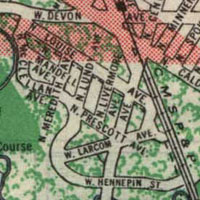 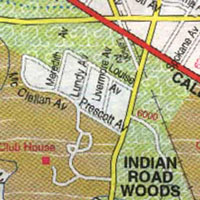
Left map: 1938 Right map: 2002
|
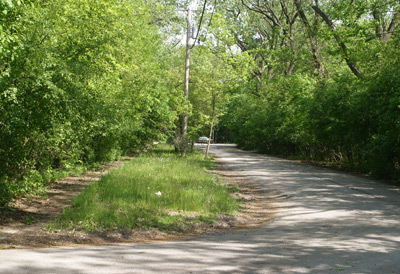
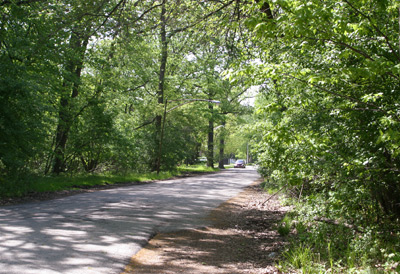
There are only two streets leading into and out of Old Edgebrook, Prescott (left) and Louise (right). Both run through a block of woods before ending at Central Avenue, adding to the secluded character of the neighborhood. The dirt sidewalks further contribute to this ambiance.
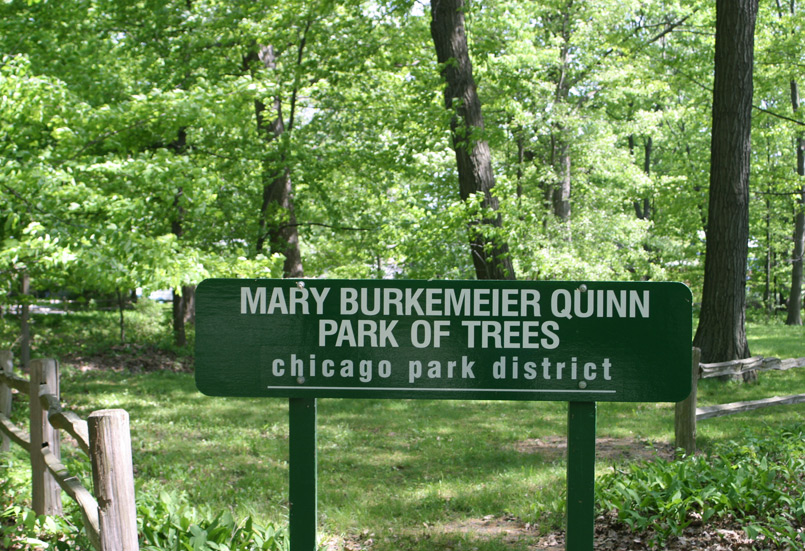
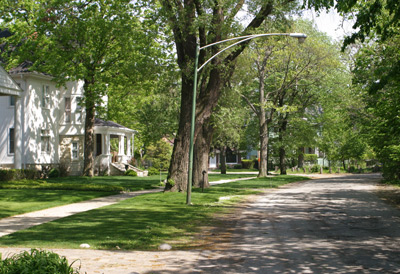
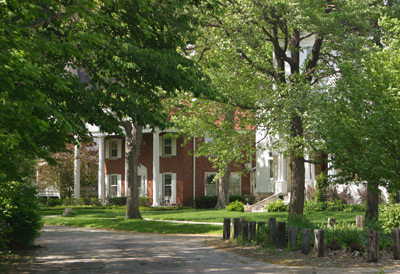
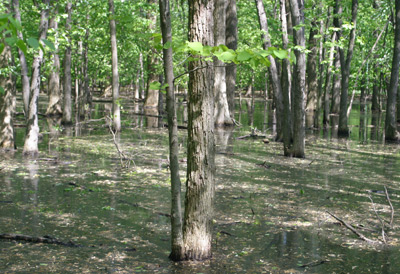
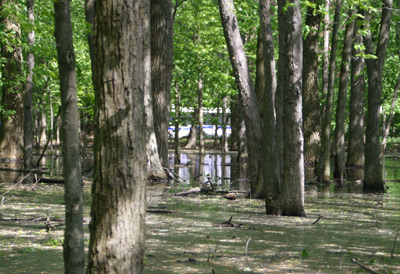
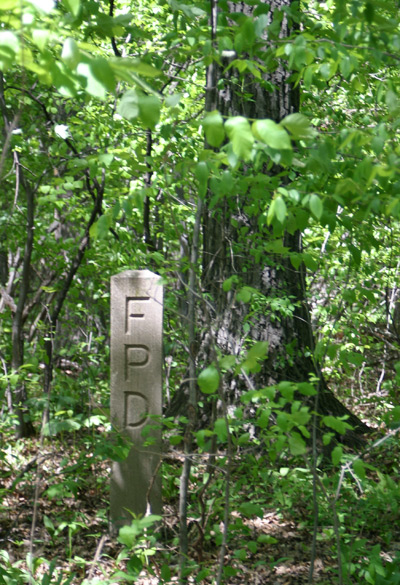
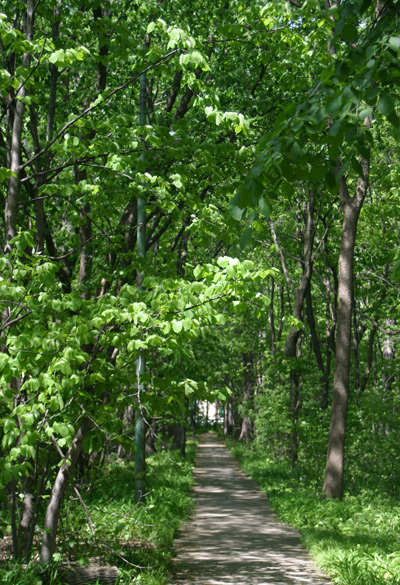
Left: These markers are found throughout the neighborhood where the woods begin. FPD stands for Forest Preserve District, and these markers are placed surrounding the District’s property.

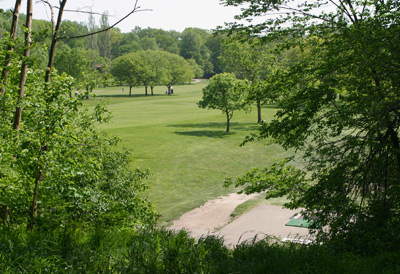



Right: There are houses here from every era. Contrasting with the older house to its left, the small house on the right looks like something out of a typical postwar Chicago neighborhood.
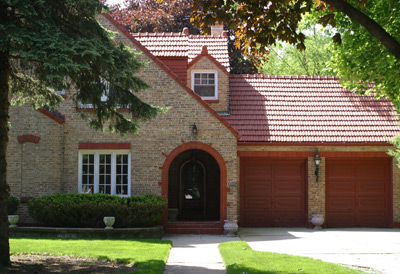

Left:This large house probably dates to the 1930s or 1940s. The entire house is faced in Chicago Common brick, the type usually used on the sides and back of Chicago buildings. Still, it looks good with the tile roof and tasteful paint scheme.
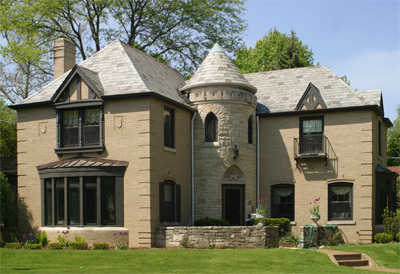
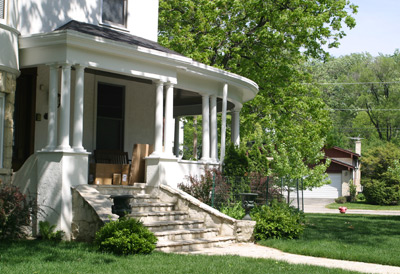
Right: Many houses here have front porches, like this one.
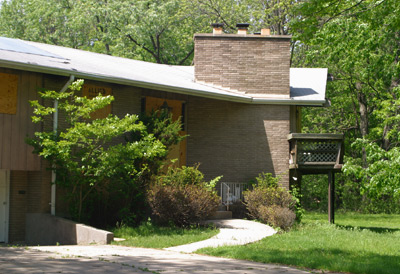

Right: This stately bungaloid (bungalow-like) house, likely dating from the 1920s, sports yellow brick, a green tile roof and a carport.
Left: Even Old Edgebrook has boarded up houses. No ordinary boarded house, this is where Christopher Pucinski, son of the late Alderman Roman Pucinski, perished in a fire. Straight out of the 1950s or early 60s, it has since been demolished.
Read more about the Pucinski story here and here. Thanks to those who wrote in about this.
Solzman, David M. “Forest Glen.” In The Encyclopedia of Chicago, edited by James R. Grossman, Ann Durkin Keating, and Janice l. Reiff, 70. Chicago: University of Chicago Press, 2004.
- Edgewater Golf Club
- Disconnected Yellow Signs
- Tiny Streets
- The Northern Indian Boundary Line
- Old Addresses



